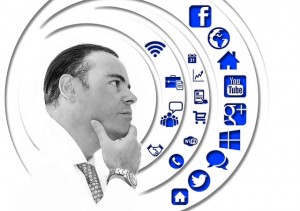New research by Stanford shows just how much the “work from home economy” grew due to COVID-19. Nearly twice as many people are working from home on a permanent, full-time basis than are working in physical locations. While that’s only 42% of the labor force in the United States, it’s a majority of people working. Unfortunately, 33% are not working at all. While not entirely due to the pandemic, it has certainly skyrocketed layoffs and unemployment. Only 26% are working in physical locations.
Before the pandemic, around 3.2% of the workforce was remote. This stat gives some data to back the common claim that COVID-19 “10x accelerated” the work from home economy. But to Stanford economist Nicholas Bloom, the study is not about the numbers. Bloom focuses on the societal impacts of working remotely and working from home. While working from home has significant benefits, there are other issues at play.
The first benefit, though? Bloom credits remote work with saving the economy from total collapse due to the pandemic.
“Without this historic switch to working from home, the lockdown could never have lasted,” said Bloom in an interview about the study. “The economy would have collapsed, forcing us to return to work, reigniting infection rates. Working from home is not only economically essential, it is a critical weapon in our fight against COVID-19 – and future pandemics.”
The big red flag
In the survey, nearly half (49%) of respondents said they cannot work from home with an efficiency rate of 80% or more. These are people who probably should not be working remotely, such as retail, healthcare, and transportation workers. For them, the work from home economy is a curse.
For the 51% of people who can work remotely at an efficiency rate of 80% or more, there’s still one massive red flag: an internet connection.
According to Bloom, only 65% of Americans have fast enough internet capacity to have video calls. That leaves 35% of the workforce – millions of people – in jobs that could technically be remote, but lacking the internet capability for them to do so.
“A time bomb for inequality”
Internet connectivity is not the only issue. Bloom also sees some roles not being remote and lacking physical infrastructure like a dedicated office as key challenges. The combination of negatives add up to what Bloom calls a “time bomb for inequality.”
“Our results show that more educated, higher-earning employees are far more likely to work from home – so they are continuing to get paid, develop their skills and advance their careers,” said Bloom. “At the same time, those unable to work from home – either because of the nature of their jobs, or because they lack suitable space or internet connections – are being left behind. They face bleak prospects.”
Solving for these issues won’t be easy, said Bloom. Even though internet infrastructure projects are either announced or promised in Canada, Greece, and the United States (among other countries), that alone won’t be enough to solve the work from home economy’s inequality problem. Other interventions will be needed. One intervention gaining significant ground right now is a universal basic income (UBI). Advocates of UBI say it will help to bridge this gap more than other welfare-state means could.
Despite its challenges and red flags, though, Bloom cites studies that are incredibly optimistic about the future of remote work. One study, the Survey of Business Uncertainty, found that working from home post-pandemic will likely increase four-fold, from around 5% of the labor force to around 20%. While this is half of current rates, it’s still a significant jump in the work from home economy.
Business & Finance Articles on Business 2 Community
(10)







